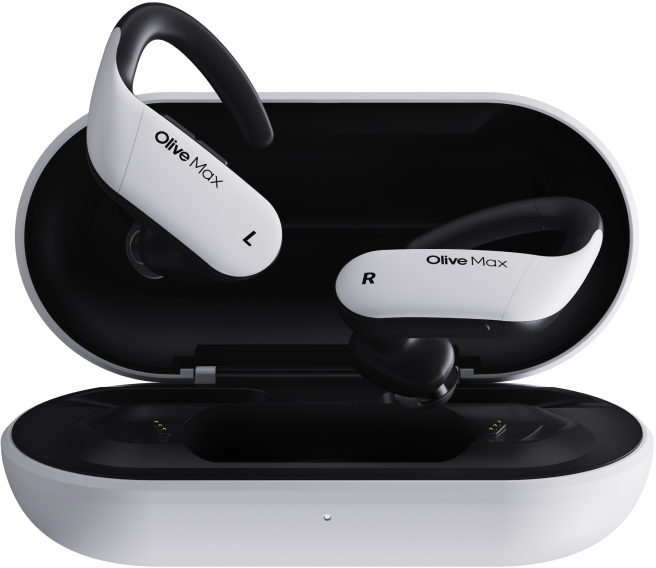
Jan 10, 2020
Olive Smart Ear was highlighted on Consumer Affairs.
----------
The entrance of Apple’s AirPods back in 2016 forced other electronics companies to develop similar products, and even hearing aid manufacturers are producing similar kinds of earbuds that stick out of a person’s ear.
Now, four years later, earbuds are predicted to be the highest growing tech category. According to the Consumer Technology Association, devices such as Apple AirPods and Samsung Galaxy Buds will help propel the category to nearly 67 million units this year (up 35 percent), and cashing in on $8.2 billion in revenue (up 31 percent).
Blurred lines
As ConsumerAffairs prepared for our trip to the Consumer Electronics Show 2020 (CES), there were a good number of listening device pitches sent our way. One thing we noticed was that both earbud and hearing aid manufacturers were touting some of the same qualities and user enhancements. Now that we’ve had a closer look at the earbud vs. hearing aid segment at CES, the lines are, in fact, blurred.
Some consumers aren’t ready -- or don’t want to spend thousands -- for hearing aids. Nuheara, a company ConsumerAffairs wrote about in our story on tech for aging consumers, is rolling out IQbuds2 , a product that can enhance a consumer’s basic hearing experience, if not replace the need for hearing aids altogether.
As a starting point, wearers take an “Ear ID” assessment from the comfort of their home. Once that’s done, the system automatically calibrates the earbuds to the wearer’s personal hearing profile.
IQbuds2 gives wearers the best of active noise cancellation and reduction. It also adds in directionality, so a user can focus on what someone next to them at, say, a restaurant is saying.
The IQbuds2 also offer the best of what other more pro-audio headphones do, such as a related app, the ability to receive phone calls, interaction with Google Home or Apple’s Siri, and an impressive 20 hours of battery life -- and there’s no need to visit a hearing clinic to get fitted.
IQbuds2 certainly has some fans -- Nuheara is taking home a CES Innovation Award for wearables, home audio/video accessories, and health and fitness -- but, is it THE answer for people with mild hearing loss? That requires an answer that should be addressed personally because each person has different needs.
Nuheara’s not in this product segment by itself. There’s also Olive Union’s Olive Smart Ear, another CES Innovation honoree which ConsumerAffairs tested at CES. Olive Smart Ear has fewer bells and whistles, and for someone who’s not tech-savvy, it might be a better entry point.
Both products are certainly contemporary options for any consumer who wants to improve their hearing and not go into debt with hearing aids until they absolutely have to.
The IQbuds2 MAX are available for pre-order now and will ship in March 2020. The MSRP will be $399. The Olive Smart Ear retails for $249, but, at present, it’s only a single-ear device (meaning no stereo capabilities when listening to music). A two-ear configuration -- Olive X -- is coming out in September and will cost $449.
The flip-side
Phonak -- a hearing aid manufacturer -- looks to improve its lot by carving out a new entry point from the opposite end of the market than Olive Union and Nuheara.
Vanity is a big, albeit subjective, reason why many consumers don’t want to wear hearing aids. Let’s face it -- one of the perceptions that people use to characterize hearing aid users is that they’re old. Phonak decided it would be a smart move to design hearing aids that look like those other highfalutin earbuds.
“For years, the most consistent thing has been miniaturization in the hearing aid industry, So, we said to ourselves, why not make something that’s a little larger,” Phonak’s John Urbaniak told ConsumerAffairs when describing the company’s new Virto Black.
“Vanity is the biggest barrier to adoption (to buying hearing aids), so we’re hoping to normalize the process of something in (the consumer’s) ear … and build on the trend (in earbuds) with this new product. Make it so that the hearing aid wearers truly have nothing to hide because it looks like an earbud.”
By upping the ante, Phonak feels that there’s an additional market to be tapped with audiophiles who a) want to be fashionable wearing the larger earbuds; and, b) want a more immersive sound experience than they would get with the ears they were born with.
Phonak basically leapfrogs everyone else by adding personally molded earbuds that are custom-fit to each wearer’s ear.
“With these, you can actually hear better than a normal person -- by 10 times, like it literally gives you superhuman hearing,” Rachel Bishop, Au.D, working as the Launch Program Manager at Phonak, told ConsumerAffairs at a booth demo.
Of course, all this juicy audio goodness comes at a price -- as in $4,000-$7,000. Phonak doesn’t sell directly to consumers, but, a la other hearing aid manufacturers, only through audiology-based providers.
Do your homework
As ConsumerAffairs has watched personal tech over the years, one thing has become increasingly apparent: don’t just trust reviews or a product’s ads. Just because a fancy set of earbuds works for one person, it doesn’t mean that another will have the exact same experience. There’s two reasons for that:
- People with different size ear canals and/or hearing aberrations will always have a different experience.
- What sounds good to one person doesn’t mean it will to someone else. At CES, ConsumerAffairs saw data which showed that less than 20 percent of a particular headphone’s wearers find the sound coming out of those devices a perfect match. That leaves some 80 percent wishing for more.
There are many variables in the hearing aid market, too -- completely in-ear vs. behind-the-ear, digital vs. analog, personalization add-ons, etc. As a courtesy to our readers, ConsumerAffairs has compiled a guide on hearing loss and hearing aids. It’s available here.









